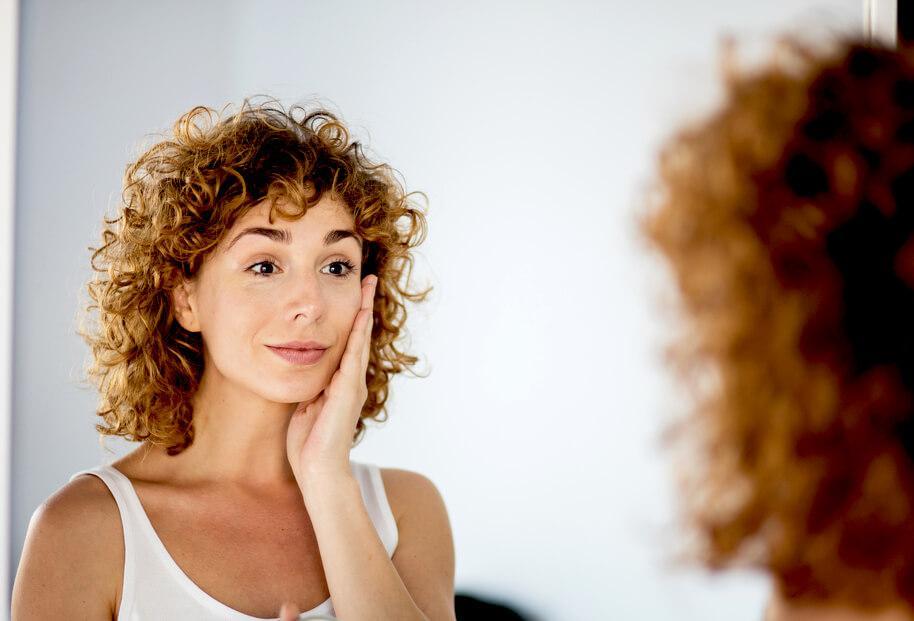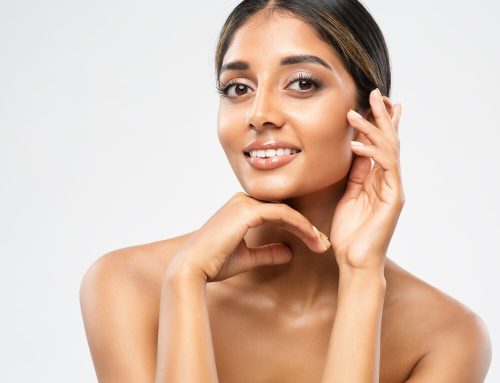
More powerful than chocolate, more affecting than creams and lotions, perhaps even more potent than sunlight: the human hormone. No matter what you include or exclude from your diet, no matter how many skin products you apply, no matter how much or little time you spend in the sun, when it comes to your skin’s condition, the human hormone seems to override them all.
While we have some understanding as to how these evil ninjas work, we still have very little control over them, which means we have a limited amount of control over our skin. If only there were some way to harness these all-powerful hormones, and use them to our advantage.
Of course, it’s been tried. HGH therapy has been used frequently to prevent aging, however, the most valuable lesson that it seems to have taught us is that we shouldn’t mess with Mother Nature. Here is a little rundown of how hormones operate, and if you can figure out a way to get them to obey, please share.
The Teen Years

If you’ve already survived your teen years, congratulations. The teen years are the years when hormones begin to rear their ugly heads, and you realize that life is unfair. Girls usually being puberty at around 12 or 13, although this can differ with influence from genetics and environmental factors. During puberty, the female body begins to produce more estrogens and androgens, and other hormones relating to reproduction, as it gears toward maturity.
Estrogen is mostly a female thing, but boys have it too. In females, estrogen comes mainly from the ovaries, where it ripens the eggs that are later shed during the menstrual cycle, and makes the body more baby friendly, causing the breasts to develop, the hips to curve, and the thighs to fill out. In the skin, estrogen decreases pore size to create a smooth appearance, and builds collagen and elastin: the proteins that keep skin resilient.
Androgens include testosterone, which, although generally associated with males, is also present in females. In puberty, the boost in the androgen levels stimulates hair growth, particularly in the pubic and underarm area. It also enlarges pores and boosts sebum (an oily substance in the skin) production, creating the perfect recipe for acne.
In girls, the estrogen and androgens hit an all time high right before ovulation, but the problem is that in young girls, the coordination tends to be off. If the levels do not peak at the right times, the signals from the immature ovary causes a hormonal imbalance. Testosterone dominates (no surprise there) and acne rears its ugly head once more.
Twenties to Mid-Thirties

If you are in your twenties to mid-thirties, appreciate this time. Your hormones will never be as good to you again. This is the time when you’re in control. During the 20’s, 30’s and early 40’s the hormonal cycles balance and the golden years of the hormone begin.
If the cycles remain on schedule, and the estrogen peaks right before ovulation, your skin will glow, much in the way a pregnant woman’s will. Testosterone will also peak, but tempered by the surge of estrogen, the sebum boost manifests itself in a luminous shine, rather than an acne breakout. This also leads to an increase in the libido. Following ovulation, the small decrease in estrogen will cause collagen and elastin levels to sink, so the glow factor is less intense, but it will return when the next cycle begins.
Late 30’s and 40’s

What goes up must come down, and that applies to hormone levels as well. After age 25, harsh reality sets in once again and the estrogen glow begins to wear off, dropping slightly in the 30’s, and more noticeably in the forties. Skin stops bouncing back the way it once did. Collagen and elastin production is decreased; skin gets looser and drier with hormones impacting skin far more significantly than any degree of sun damage.
By the mid to late 40’s most women are in peri-menopause, the interim between ovulation and menopause, in which ovulation ceases completely. As hormone cycles adjust to accommodate these new changes, adults may experience a resurgence of acne, increase of facial hair, and thinning of hair on the scalp.
50’s and Up

Sound the violins. The fifties is the time when most women are in menopause. The production of hormones are far lower than before, and estrogen is at an all-time low. One study in Venus Week found that collagen production decreases 2.1 % per year in the years following menopause, which means an average 30% decrease in collagen between the ages of 50 to 65. Skin loses density and moisture and wrinkles begin to appear. In some cases, menopause can cause adult acne, or even rosacea, a skin disorder which causes skin to redden and swell.
Other Ways Hormones Can Get Out of Control
Of course, we are what we eat, and our hormones are part of what we are; which means that a poor diet can also throw off hormonal balance, and that spells more trouble for the skin. Diets high in sugar can throw off the balance between testosterone and estrogen, and Western diets rich in processed food and carbohydrates can produce an overload of insulin, another hormone that regulates level of blood sugar. After eating sugar, insulin levels spike. Too much sugar and the body develops insulin resistance and the road to diabetes begins.
Insulin resistance can lead to polycystic ovary syndrome (PCOS), a condition in which the body produces an overwhelming amount of androgens, leading to excess hair growth on the face and chest, acne, oily skin, hair loss, infertility, ovarian cysts, and irregularities in the menstrual cycle.
According to Dr. Petak, MD and endocrinologist at the Texas Institute for Reproductive Medicine and Endocrinology, “These cosmetic changes may be indications of serious underlying conditions that should be fully evaluated, not covered up. It’s important to be aware that this is representative of an underlying problem.”
PCOS is most commonly diagnosed when a woman is in her 20’s or 30’s, but symptoms often begin to appear during puberty.
The Good News
They say knowledge is power, and there is some powerful knowledge to be gained here. Here is some professional wisdom from Drs. Petak and Rebecca Booth, MD, obstetrician and gynecologist, about how you can take the power back from your hormones.
Altering your diet is one of the most effective ways of preventing insulin resistance and PCOS. Booth says it’s time to quit the white and go with the right. Exchange the white bread, pasta, crackers, and rice with whole grains. Low-fat proteins like poultry, fish, tofu or legumes are better protein options than cured or red meats like cold cuts and sausages, and fruits and veggies are a must. Even women who are not at risk for PCOS can benefit from these minor changes.
Diet and exercise can both impact hormone levels, which can affect the skin and overall wellbeing, but don’t go overboard. Skinny ladies who overexercise can also get their hormones in a tizzy. Doctor Petak recommends maintaining a stable body mass index between 20 and 25.
Routine skin care is another way to beat the hormone fluctuations. Women, especially those in their teens and 20’s can help to get a grip on acne by using facial cleanser with salicylic acid, while older women noticing a decrease in skin elasticity and hydration might try using a weekly exfoliant to increase cell turnover and an antioxidant moisturizer to protect skin from environmental damage. Retinoids are helpful for lessening the appearance of wrinkles, and never forget the sunscreen. While this may not offer any preventive solution to the hormonal problem, it may help in easing the consequences.
Hormone Replacement Therapy
So by now you’re probably thinking, ” With so many advancements made in skin care, why don’t they just figure out a way to replace lost estrogen? Surely, we have discovered the fountain of youth, and it flows with estrogen! There must be a way of packaging this stuff!”
Well, brilliant minds think alike, and for many, HRT is an effective way of alleviating symptoms associated with menopause. in fact, there are women who have noticed a marked improvement in the appearance of their skin after Hormone Replacement Therapy. However, dermatologists remain skeptical. They argue that studies of estrogen replacement do not show enough significant improvement in skin rejuvenation to warrant the risk of the dangerous side effects.
According to dermatologist Margaret E. Parsons, MD, FAAD and clinical professor of dermatology, studies demonstrate mixed results when determining the effectiveness of estrogen replacement on the appearance of skin. “Based on the research conducted thus far, it does not appear that topical or oral estrogens are a viable long-term solution for improving sun-damaged or aging skin. In my practice, I do not prescribe estrogens for skin rejuvenation because of the lack of consistent data to support their use ad the known risks of prolonged estrogen therapy- including an increased risk of breast cancer.”
Despite her reluctance to prescribe HRT to her clients, Parsons does acknowledge that certain parts of the body, namely the face, contain cells that are more receptive to estrogen than others. She also notes that estrogens can benefit the skin in several ways, including an increase in collagen production, elasticity, and water retention.
Most commonly, in the past, physicians prescribed HRT to treat the symptoms of menopause, including mood swings, hot flashes, and vaginal changes; however, when the results of a Women’s Health Initiative study found that women receiving the treatment were at an increased risk for breast cancer, the prescriptions came less often and at lower dosage with more focus on the woman’s health history.
But results are results, and when some women noticed an improvement in their skin, the risk of cancer did not seem to pose much of a deterrent. Further research was conducted, yet, still the ends did not justify the means. The final determination? Inconclusive. The jury is still out on HRT.
While one study published in the September 2008 edition of Journal of the American Academy of Dermatology found that estrogen supplementation did not lead to any significant improvement in photo-damaged skin, another study in which women started treatment right at the onset of menopause, unlike the other group, did notice improvements. The upshot? Questions remain and more research needs to be done.
In the meantime, Parsons advises her patients to consider the use of other effective therapies to address the signs of aging including alpha-hydroxy acids, retinoids, lasers, botox, skin filler and chemical peels.
“The best advice,” Parson states, “I can offer my patients to improve overall skin health is to wear a sunscreen with sun protection factor of at least 30, don’t smoke, and use a topical retinoid. When it comes to minimizing the cumulative effects of sun damage, an ounce of prevention really goes a long way.”
Ways To Increase HGH Naturally
Still thinking that estrogen is the key to eternal youth, but not so sure its worth the risk? Here are some more natural options for upping your estrogen level.
High-Intensity Exercise
HIT is hot. Not only is high intensity training the newest anagram on the lips of every celebrity trainer, it’s also a well-documented way of increasing HGH secretion. Research suggests that exercise-induced growth hormone response is a key factor in the regulation of HGH levels.
An exercise intensity above a lactate threshold performed for a ten-minute minimum produces a great stimulus HGH generation, and also promotes well-being, and positive health outcomes.
Laughter
They say that laughter is the best medicine; could it also be the key to eternal youth? According to researchers at the Loma Linda University, HGH levels increased 27 percent when participants watched a humorous video.
Liver Detox
Could a clean liver lead to clear skin? HGH stimulates the liver into IGF-1 production which increases cell proliferation in the body. Poor liver function can hamper the effects of HGH, so if you want to be a longer liver, detox your liver.
What do you think? Is HGH worth the risk? Let us know what you make of all the ups and downs of hormones, and whether we should meddle with Mother Nature.





Leave A Comment